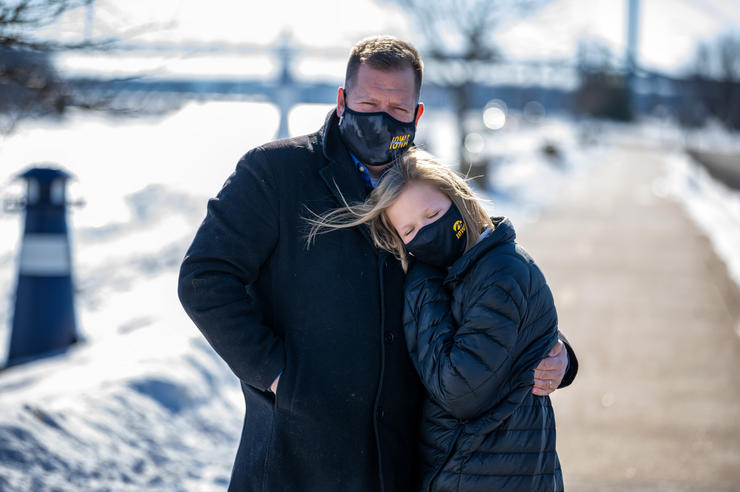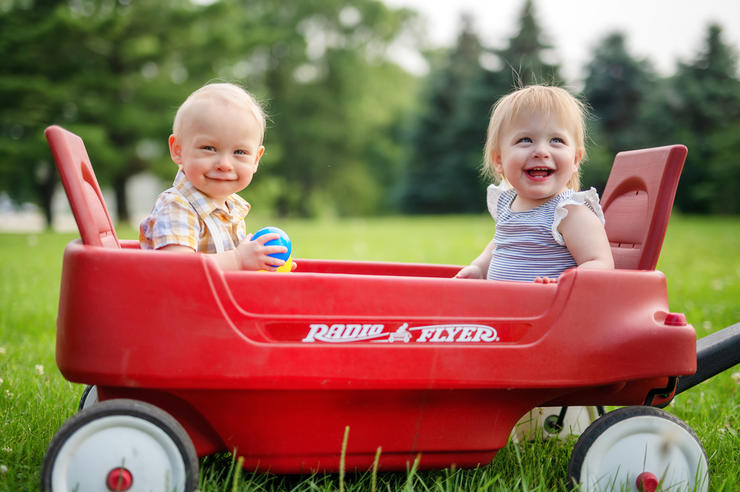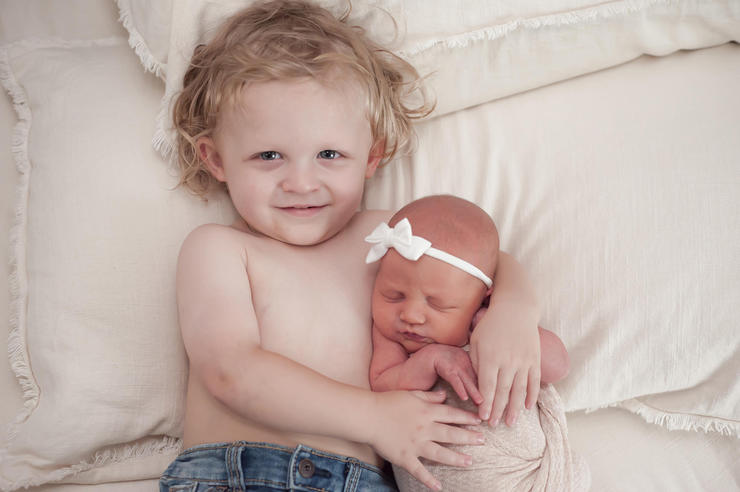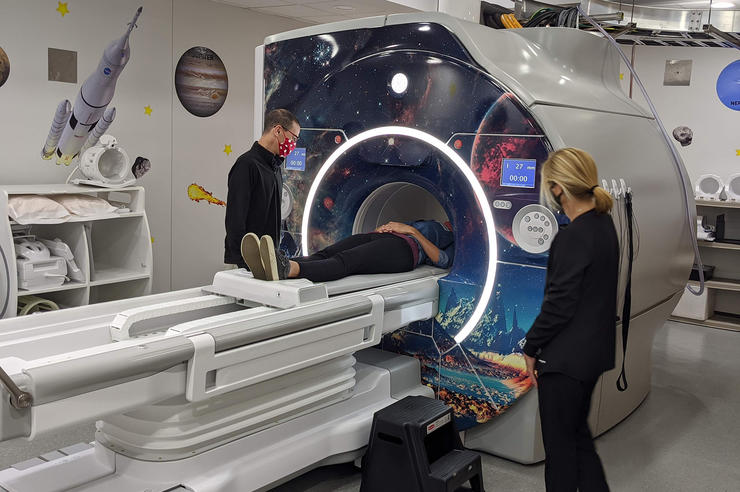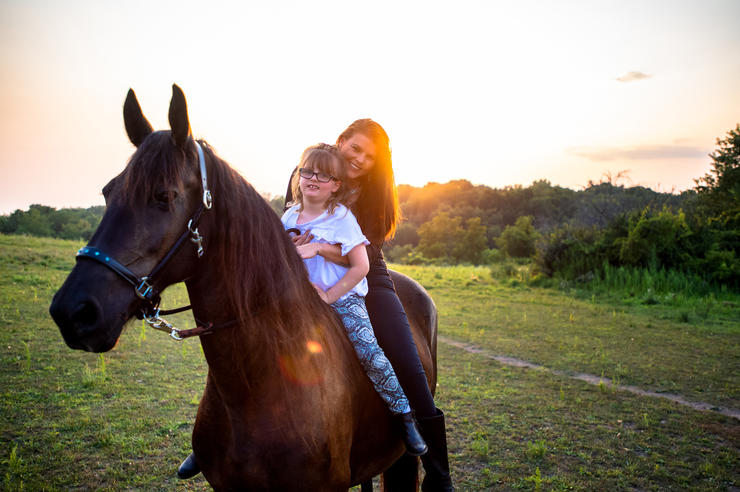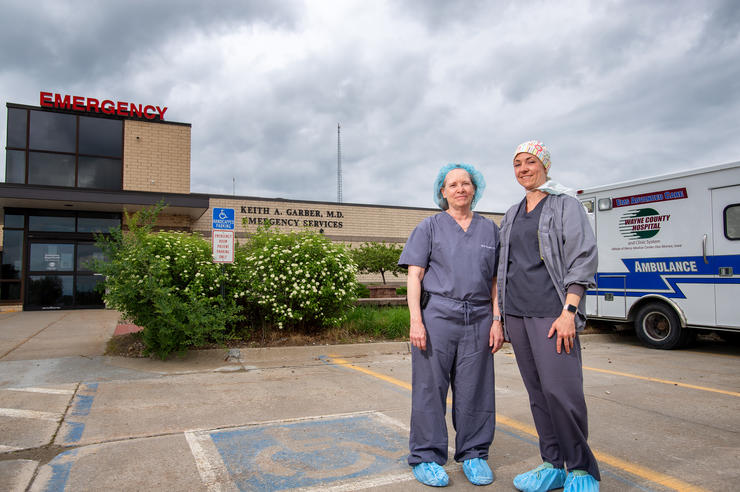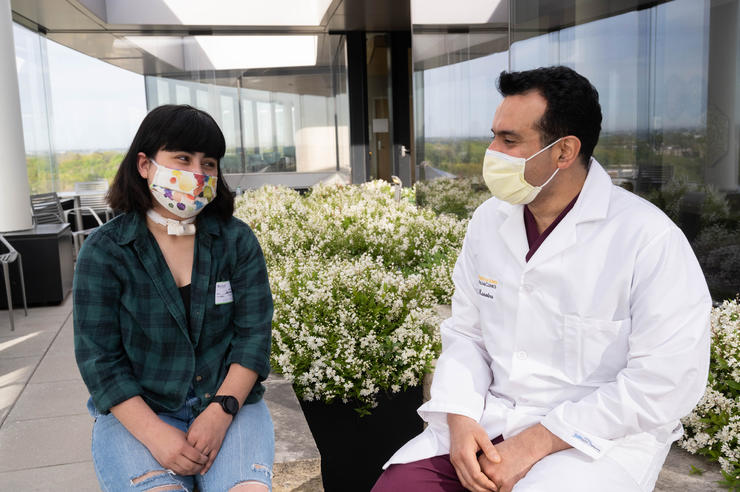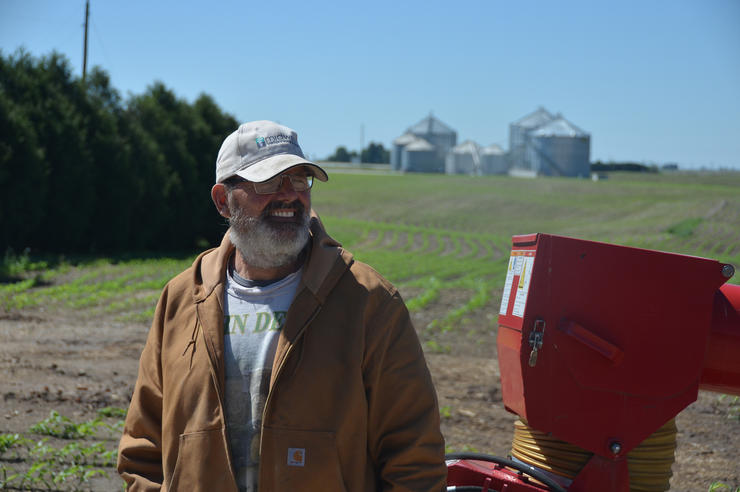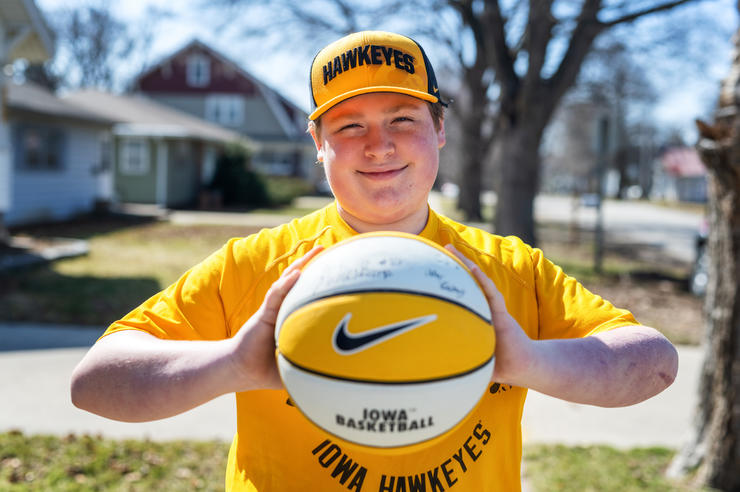Post-COVID-19 lung transplant gives man a new lease on life
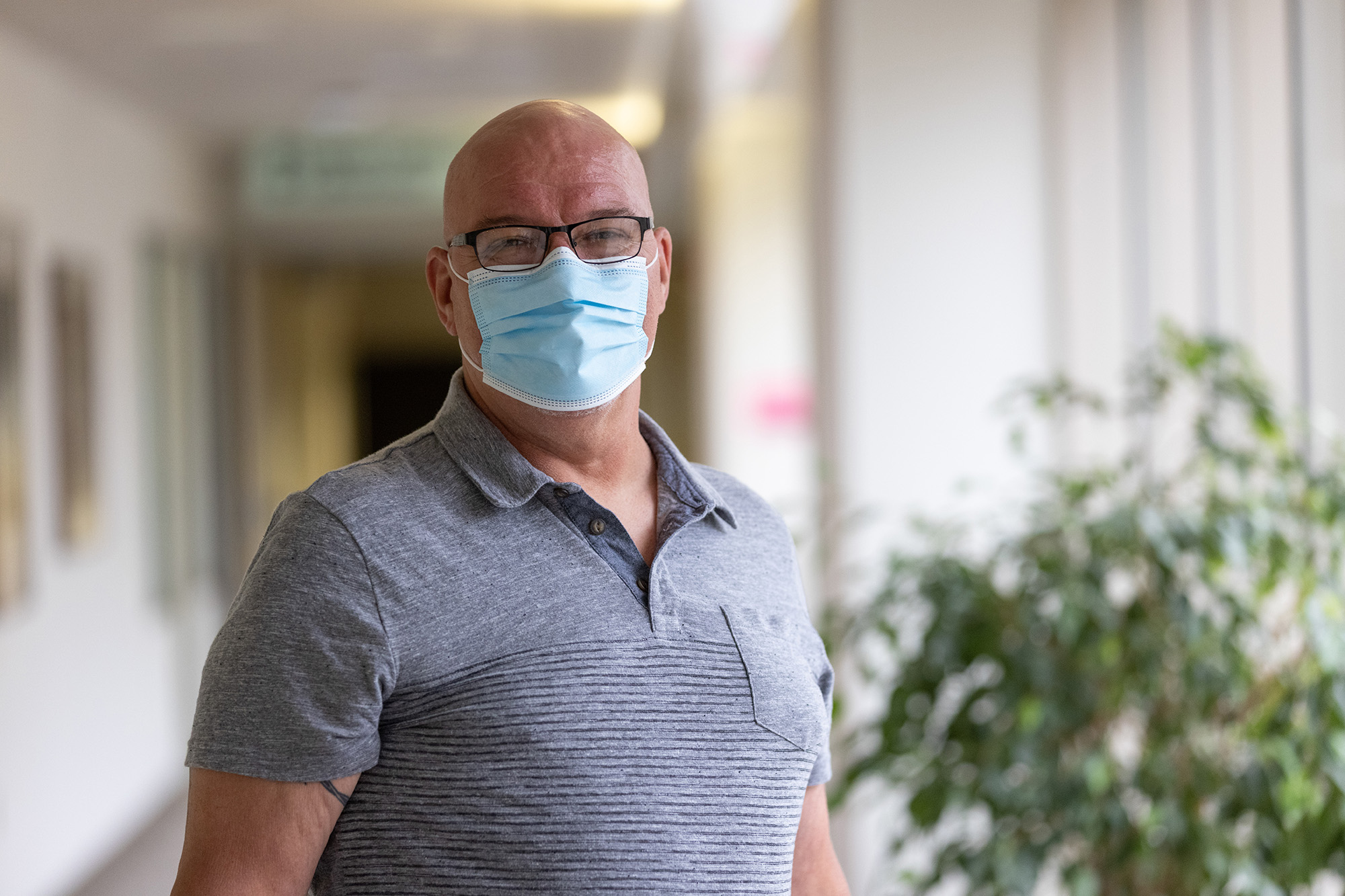
Randy McIntyre of Andalusia, Illinois, was a healthy 58-year-old before a case of COVID-19 in January 2021 changed his life forever.
COVID-19 damaged McIntyre’s lungs so badly that he couldn’t leave the hospital. His lungs could no longer provide the amount of oxygen his body needed. Just a few months after his COVID-19 diagnosis, McIntyre’s one hope for survival was a lung transplant.
In June, a transplant team at the University of Iowa Organ Transplant Center performed a double lung transplant, restoring his ability to take a simple breath.
“I feel great,” he says. “To be able to wake up every morning and breathe in fresh air is a wonderful thing.”
By all measures, the University of Iowa Organ Transplant Center is the region’s leading transplant center. Our patients are at the center of a transplant team whose members include nationally recognized experts and the complete range of advanced medical and surgical options for transplant.
A national trend
McIntyre’s transplant was the first of two COVID-19-related lung transplants performed to date at the UI Organ Transplant Center.
Cardiothoracic surgeon Kalpaj R. Parekh, MBBS, surgical director of UI Health Care’s lung transplant program, says the number of COVID-19-related lung transplants seems likely to grow in the coming years, and the patients who will need them fall into three general categories.
“The first is someone who is so sick from COVID-19 that they can’t come off their life support,” Parekh says. “The only way they can survive is with a new set of lungs.
“McIntyre’s in the second category. They got COVID-19 and recovered from it, but it did significant damage to their lungs, and they can’t get off oxygen and go back to their day-to-day life.
“The third category is people who already had lung disease, had a mild version of COVID-19, and had scarring in their lungs that could worsen over time. Only time will tell whether we see more transplants in the third category.”
Transplant is the only option
McIntyre hoped his COVID-19 diagnosis would be just a bump in the road, even after his condition required him to be admitted to a hospital in the Quad Cities.
As his condition worsened, however, he was transferred to UI Hospitals & Clinics. That’s where he learned about the serious complications of his illness.
“The doctors said my lungs looked like broken glass,” McIntyre says. “They were scarred up. I remember one of the doctors showing me X-rays, and I said, ‘There’s no bouncing back from that, is there?’ He said, ‘No.’”
Michael Eberlein, MD, a pulmonologist on McIntyre’s transplant team, says that by April, it was apparent that McIntyre’s lungs had no chance of getting better.
“He needed such high levels of oxygen, especially when he was trying to walk, that it wasn’t possible for him to get that amount of oxygen at home,” Eberlein says. “The only place he could stay safe was at the hospital.”
“I feel great. To be able to wake up every morning and breathe in fresh air is a wonderful thing.”
In May, cardiothoracic surgeon John C. Keech, MD, and Parekh performed McIntyre’s 12-hour lung transplant procedure.
Though his life was hanging in the balance, McIntyre felt no fear as he prepared for surgery. He knew he was in good hands.
“When they finally wheeled me in, I was actually relaxed,” he says. “I don’t think my blood pressure or heart rate went up.”
‘We’ll get there’
The complex procedure went smoothly, as did McIntyre’s recovery. About two weeks later, he left the hospital. His caregivers lined up in the hallway to applaud him as he started his trip home.
McIntyre says the touching sendoff was typical of the way he was treated throughout his long hospital stay.
“It wasn’t like they just walked in and did their thing and left,” he says. “They sat there and listened to you—your problems or what was going on—and cheered you up. I mean, spending five months in the hospital isn’t fun.”
Leading up to his transplant, two family members, a nephew and a brother, died within a day of each other. His care team made sure he had psychological counseling available to help him cope with the losses.
“There was about a week where they were like, ‘We’ll let you have some peace and quiet,’” McIntyre says. “The care that they give you there is second to none. Everyone was like, ‘Is there anything we can do for you?’”
McIntyre, who works as a trucker, sees his recovery as the next leg of the journey.
“It’s been a long road,” McIntyre says. “It’ll take a little bit more time to get these new lungs fully moving, but we’ll get there.”
